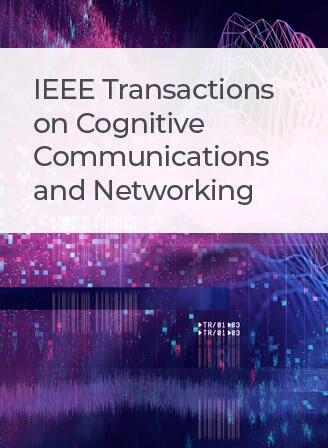Integrated Sensing and Communication Signal Processing Based on Compressed Sensing Over Unlicensed Spectrum Bands
IF 7.4
1区 计算机科学
Q1 TELECOMMUNICATIONS
IEEE Transactions on Cognitive Communications and Networking
Pub Date : 2024-04-19
DOI:10.1109/TCCN.2024.3391307
引用次数: 0
Abstract
As a promising key technology of 6th generation (6G) mobile communication system, integrated sensing and communication (ISAC) technology aims to make full use of spectrum resources to enable the functional integration of communication and sensing. The ISAC-enabled mobile communication system regularly operate in non-continuous spectrum bands due to crowded licensed frequency bands. However, the conventional sensing algorithms over non-continuous spectrum bands have disadvantages such as reduced peak-to-sidelobe ratio (PSLR) and degraded anti-noise performance. Facing this challenge, we propose a high-precision ISAC signal processing algorithm based on compressed sensing (CS) in this paper. By integrating the resource block group (RBG) configuration information in 5th generation new radio (5G NR) and channel information matrices, we can dynamically and accurately obtain power estimation spectra. Moreover, we employ the fast iterative shrinkage-thresholding algorithm (FISTA) to address the reconstruction problem and utilize K-fold cross validation (KCV) to obtain optimal parameters. Simulation results show that the proposed algorithm has lower sidelobes or even zero sidelobes compared with conventional sensing algorithms. Meanwhile, compared with the improved 2D FFT algorithm and conventional 2D FFT algorithm, the proposed algorithms in this paper have a maximum improvement of 54.66% and 84.36% in range estimation accuracy, and 41.54% and 97.09% in velocity estimation accuracy, respectively.基于非授权频带压缩传感的综合传感与通信信号处理
作为第六代(6G)移动通信系统中一项前景广阔的关键技术,综合传感与通信(ISAC)技术旨在充分利用频谱资源,实现通信与传感的功能集成。由于许可频段拥挤,支持 ISAC 的移动通信系统经常在非连续频段上运行。然而,在非连续频段上使用的传统传感算法存在一些缺点,如峰值-侧叶比(PSLR)降低和抗噪性能下降。面对这一挑战,我们在本文中提出了一种基于压缩传感(CS)的高精度 ISAC 信号处理算法。通过整合第五代新无线电(5G NR)中的资源块组(RBG)配置信息和信道信息矩阵,我们可以动态、精确地获得功率估计频谱。此外,我们采用快速迭代收缩阈值算法(FISTA)来解决重构问题,并利用 K 折交叉验证(KCV)来获得最优参数。仿真结果表明,与传统传感算法相比,所提出的算法具有更低的侧摆,甚至是零侧摆。同时,与改进的二维 FFT 算法和传统的二维 FFT 算法相比,本文提出的算法在测距估计精度方面分别提高了 54.66% 和 84.36%,在速度估计精度方面分别提高了 41.54% 和 97.09%。
本文章由计算机程序翻译,如有差异,请以英文原文为准。
求助全文
约1分钟内获得全文
求助全文
来源期刊

IEEE Transactions on Cognitive Communications and Networking
Computer Science-Artificial Intelligence
CiteScore
15.50
自引率
7.00%
发文量
108
期刊介绍:
The IEEE Transactions on Cognitive Communications and Networking (TCCN) aims to publish high-quality manuscripts that push the boundaries of cognitive communications and networking research. Cognitive, in this context, refers to the application of perception, learning, reasoning, memory, and adaptive approaches in communication system design. The transactions welcome submissions that explore various aspects of cognitive communications and networks, focusing on innovative and holistic approaches to complex system design. Key topics covered include architecture, protocols, cross-layer design, and cognition cycle design for cognitive networks. Additionally, research on machine learning, artificial intelligence, end-to-end and distributed intelligence, software-defined networking, cognitive radios, spectrum sharing, and security and privacy issues in cognitive networks are of interest. The publication also encourages papers addressing novel services and applications enabled by these cognitive concepts.
 求助内容:
求助内容: 应助结果提醒方式:
应助结果提醒方式:


